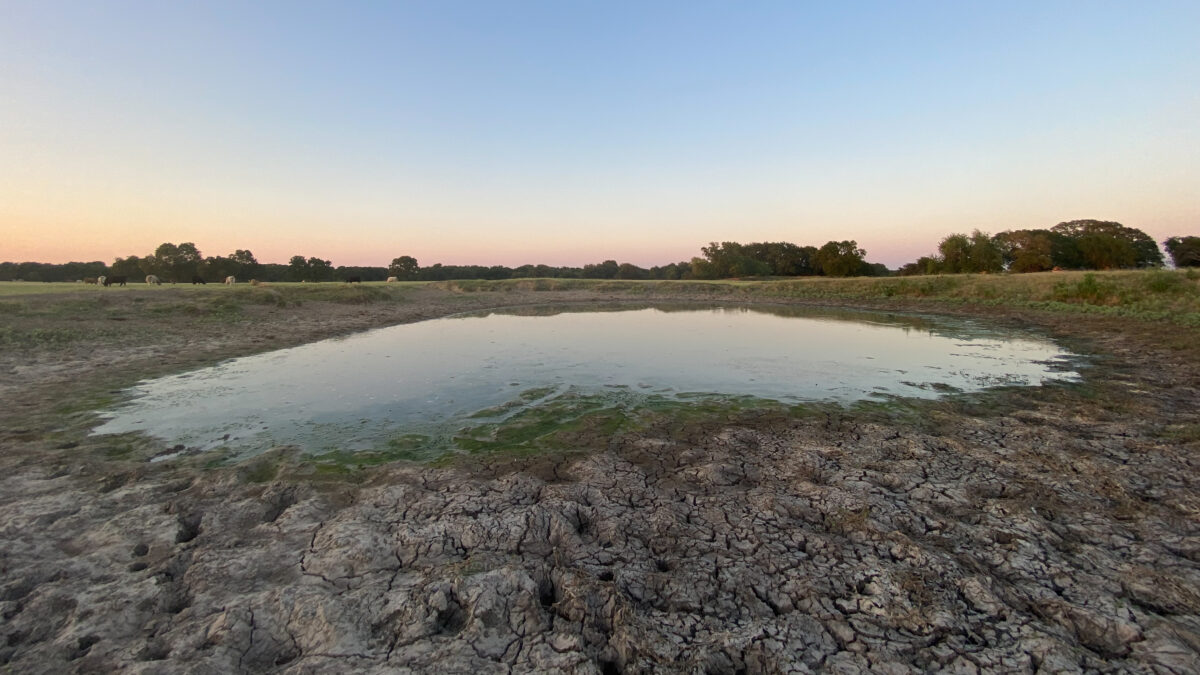Drought Resilience Requires a Holistic Approach
TOPICS
LivestockGuest Author
Special Contributor to FB.org

photo credit: Texas Farm Bureau, Used with Permission
Guest Author
Special Contributor to FB.org
By Stefanie Smallhouse @loveamericanAg
My husband and I took over operating the family ranch in 2000 after the sudden passing of his father; I remember it was an especially dry year. In the desert that is not much in the way of news, but more of a tendency. Even so, we were forced to liquidate two-thirds of our cattle herd because we did not have the necessary infrastructure to manage what became a longer-term situation.
We now know that what started in 2000 and continues today is considered a megadrought with no end in sight, one of the driest periods in the Colorado River Basin in 1,200 years according to tree-ring data. Feeding hay, hauling water and a poor calf crop combined with low prices will put a rancher out of business quickly in the arid Southwest. A few dry years sprinkled within a decade are expected and recoverable, but 20-plus years of well below-average precipitation creates long-term consequences that accumulate over time and exacerbate existing resource concerns.
Water infrastructure projects are not only critical for access to water, but they also provide critical energy production.
Just two examples: Our overgrown forests are tinderboxes, and our water projects are aging and inadequate.
According to the National Interagency Fire Center, the number of acres burned in 12 western states has more than doubled from 4.2 million acres in 2002 to 9.4 million acres in 2020. A diminished timber industry, a litigious environment and a drier climate have created the perfect scenario for catastrophic fires.
The Colorado River system, which was allocated to seven Western states a century ago, provides drinking water to more than 40 million people and irrigates 5.5 million acres of farmland. Next month, the Bureau of Reclamation will release its 24-Month Study which is certain to trigger a Tier 1 shortage. This will be the first shortage call on the river in its history of managed allocation, and Arizona farmers, many of whom are growing hay for parched ranchers, will be the first to lose their water.
A similar situation is playing out all over the West. Farm fields across the region are being fallowed to meet in-stream flow requirements for endangered species while tribal settlements have created a complex matrix of legal restrictions that have further tightened water availability during times of shortage. Water infrastructure projects are not only critical for access to water, but they also provide critical energy production. An ongoing effort in Idaho threatens to deconstruct dams along the Lower Snake River and a privately held water project in California is scheduled for disassembly due to environmental-related litigation.
It is encouraging that the Biden administration recently created an Interagency Working Group to address the ongoing drought and its impacts, while the Senate continues work on an infrastructure package. However, it is not only critical that Western water infrastructure is included in this package, but that drought preparedness take a holistic approach. Overly burdensome regulations which inhibit progress, as well as ongoing efforts to undermine our current water projects, should be closely examined. In addition, valuable conservation and risk management programs may need enhancement to better offset prolonged periods of drought, as the way we manage our forests is fundamental in augmenting water supplies.
Despite the ongoing drought, we have managed to build back our herd through long-term planning, risk management and infrastructure investment. Although grit will get you through the dry spells, resilience will ensure a brighter and hopefully wetter future.
Stefanie Smallhouse is president of Arizona Farm Bureau.
Top Issues
VIEW ALL